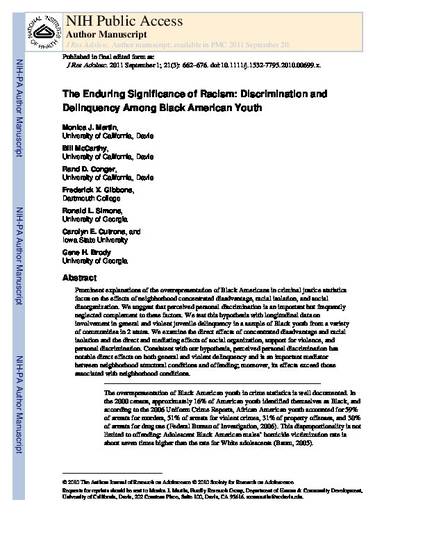
Prominent explanations of the overrepresentation of Black Americans in criminal justice statistics focus on the effects of neighborhood concentrated disadvantage, racial isolation, and social disorganization. We suggest that perceived personal discrimination is an important but frequently neglected complement to these factors. We test this hypothesis with longitudinal data on involvement in general and violent juvenile delinquency in a sample of Black youth from a variety of communities in 2 states. We examine the direct effects of concentrated disadvantage and racial isolation and the direct and mediating effects of social organization, support for violence, and personal discrimination. Consistent with our hypothesis, perceived personal discrimination has notable direct effects on both general and violent delinquency and is an important mediator between neighborhood structural conditions and offending; moreover, its effects exceed those associated with neighborhood conditions.
Available at: http://works.bepress.com/carolyn_cutrona/8/

This is an author's manuscript of an article from Journal of Research on Adolescence 21 (2011): 662–676, doi:10.1111/j.1532-7795.2010.00699.x. Posted with permission.